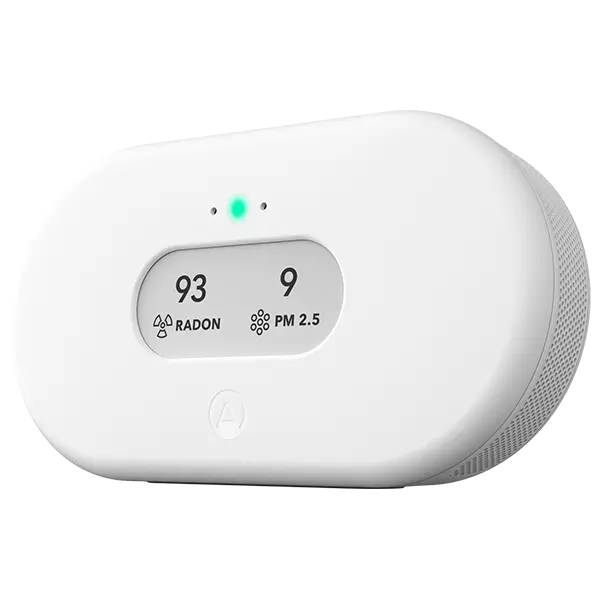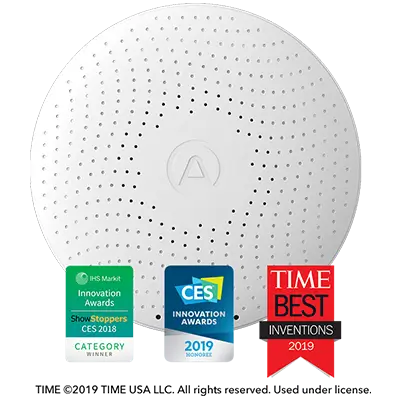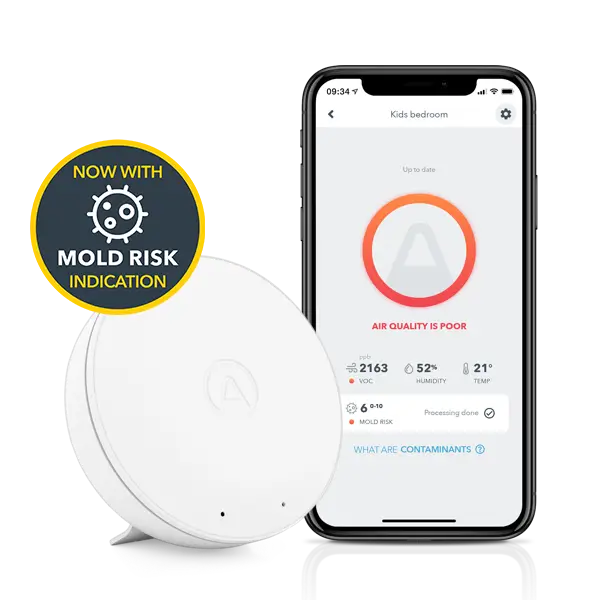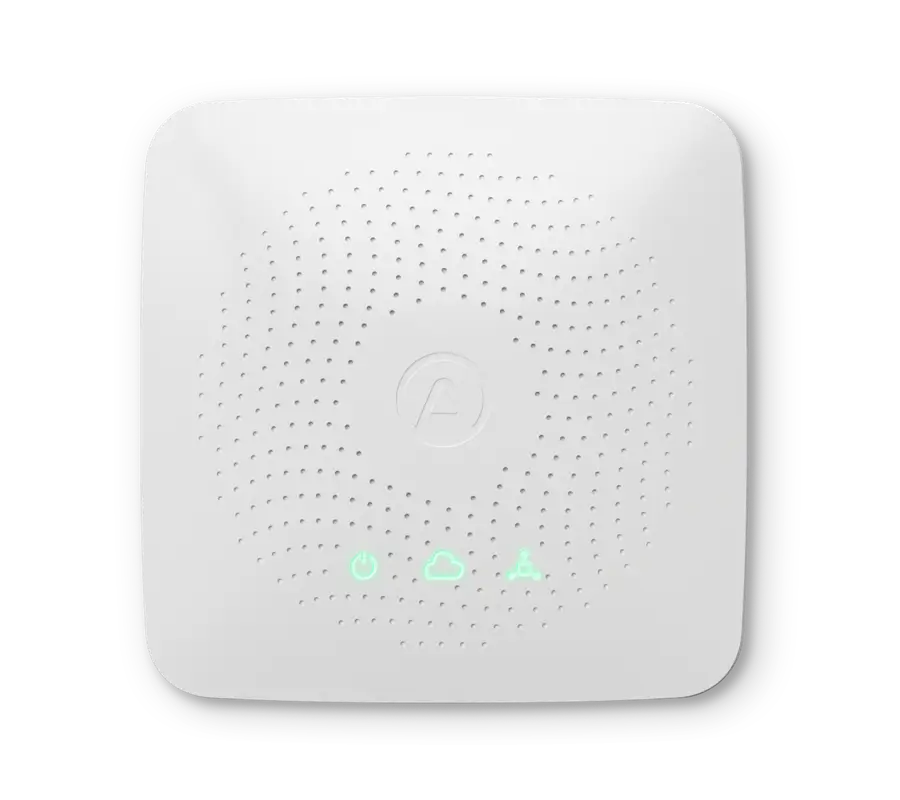Testing for radon used to mean collecting the gas using a charcoal canister. The latest monitors now offer continuous and digital radon detection, with sophisticated sensors that form part of your ‘smart home’.
The traditional method of detecting radon relies on absorbing the gas with grains of charcoal. The sample is then analyzed in a lab, to determine levels of the gas.
Apart from the fact that this process is inconvenient and the test results can take some time to come back, it provides only a brief snap-shot of radon concentrations in a building – only one number which tells you the average radon level during the time you left it for testing. The results can also be affected by environmental conditions, user errors are common, and they don’t show fluctuations.
In contrast, digital detectors gather information continuously, so they show how levels of radon fluctuate over time. These monitors are tested using an industry-standard professional sensor as a reference device.
Measuring radon digitally and continuously is typically more accurate and reliable. The data provides a richer understanding of the levels of gas in your property, so that you can take more effective action if needed.
The latest tech can also be integrated with smart devices around your home – like Google Assistant and Amazon Alexa – so you have new and convenient options for retrieving information about the air you breathe.
What is radon?

Radon is a colorless, odorless radioactive gas. It is emitted naturally when uranium breaks down in rock and soil under our feet. The substance can seep into buildings through cracks in the foundations and, in some places, it exists in high concentrations, resulting in the higher chance of harmful levels indoors.
When there is too much radon in our homes, we’re at a higher risk of getting lung cancer. The US Surgeon General has warned that it is the second most common cause of the disease after smoking. It accounts for 21,000 deaths in the US and 20,000 deaths in the EU each year.
The Environmental Protection Agency (EPA) estimates that 7.1 million American homes are affected by potentially unsafe levels of radon. The British government has published maps showing that large parts of the UK experience higher concentrations of the gas. Often, this is down to the geology of a particular area. For instance, levels may be higher where the ground rock is rich in granite.
We are all exposed to radiation constantly. Approximately 48% of the total amount of radiation exposure comes from radon gas in the ground.
If you discover that the levels of radon in your home are a problem, the good news is that it’s possible to take action to improve the situation. This may involve something as simple as opening a window—the trick is knowing when to ventilate by monitoring. Otherwise, it may be necessary to seal up holes and cracks in the building or use plastic sheeting to insulate any crawl space underneath the house.
Ventilation is key to dispersing the gas. What is important to remember is that there are simple, inexpensive solutions to improve the ventilation in a home and reduce the radon levels.
Why monitoring can be critical
Radon is linked to lung cancer because it emits tiny radioactive particles that can damage the cells that line our lungs. You cannot see, taste, or smell the gas, so without testing it’s impossible to discover if it exists in harmful concentrations in your home or workplace.
The Canadian lung association, Breathe, recommends that everyone should use a radon detector in their home. In Canada, a level lower than 200 Bq/m3 is considered safe, while action is recommended for higher concentrations. However, the organization points out that it is a good idea to try to lower levels of radon even if the measurements are below 200 Bq/m3.
A digital monitor ensures that you have information about radon on an ongoing basis. There are numerous stories from homeowners who have bought real estate on the basis of one off readings, only to find out later that levels of the gas have changed.
This is due to the fact that radon fluctuates greatly because of environmental conditions, but it can also be caused by something as simple as a broken fan in a ventilation unit. Continuous radon monitoring ensures that when problems do arise, you know about it and you can put things right.
A brief history of radon detection

The traditional method of measuring radon involves the humble charcoal test, or film test.
A canister of charcoal grain or charcoal liquid is used to absorb radon or its byproducts. The test remains in place for up to three months, at which point it must be sent to a lab for analysis. Technicians then count how many radioactive particles are emitted from the charcoal, using a sodium iodide counter, or they count how many spots are on the film.
This process was prone to inaccuracy and error, either caused by the user, or the laboratory technician. The results could take some time to get back and usually include a lab fee of some sort.
Digital monitors are ‘active’ rather than ‘passive,’ in that they are powered by electricity or a battery. They measure the alpha decay of two isotopes of radon continuously, without needing to send anything away or wait for the results.
Industry leading sensors are easy to install and the data they produce is accessible via app or online dashboard. It’s easy to view, customize, and analyze information remotely and software interprets key measurements, offering tips on how to minimize problems.
The latest radon monitors are highly connectable. They can be optimized for products like IFTTT, so that actions to control radon levels can be taken automatically. You can even check levels of radon by issuing voice commands to your smart speaker.
Looking to the future
With radon monitors integrating with smart home tech, it might seem like the future is now, but there will be more exciting developments to come.
The air that we breathe affects our health, as well as our ability to think, work, and play. Our future will be one where we have detailed information about this precious resource and the power to make changes that improve our lives.
Key takeaways:
- Traditional radon detection relies on a charcoal or film canister that absorbs the gas. They were prone to inaccuracy and only gave a snapshot of levels in your home.
- Digital monitors provide continuous monitoring, so that they measure fluctuations in radon levels.
- High concentrations of radon damage our health and can cause lung cancer.
- In the future we are likely to need only one device to measure radon, IAQ and particulate matter.













%20(1).webp)

%20(1).webp)
